Moto One Action Review
Moto One Action Review
GoPro meets a phone?
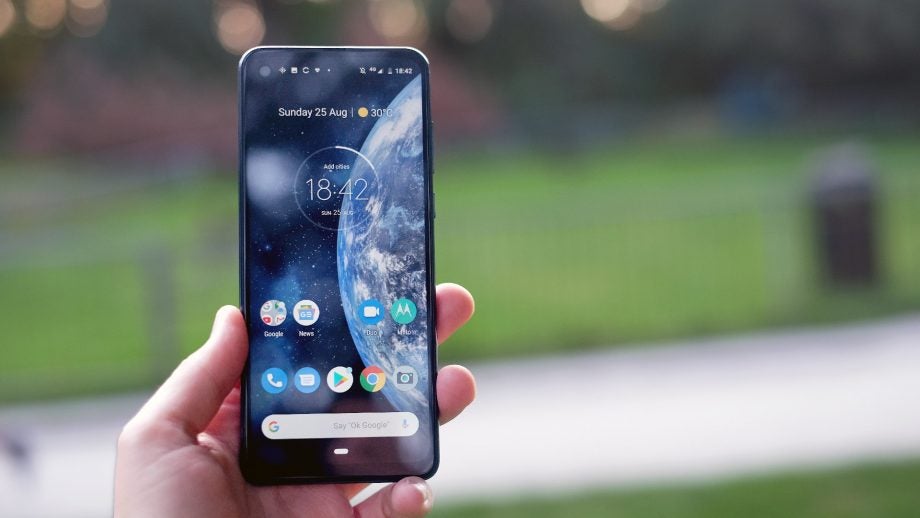
Verdict
A solid affordable Android with an interesting, if not essential, GoPro-like action camera feature.
Pros
- Neat action camera feature
- Bright, good-looking screen
- Enough power
Cons
- Fairly large punch hole
- Plastic back
- Camera is not a revelation
Key Specifications
- Review Price: £219
- Triple camera, including one for wide angle video
- 6.3-inch FHD+ display
- Exynos chipset, 4GB RAM
- 128GB internal storage
- Headphone jack
What is the Motorola One Action?
The Motorola One Action is an affordable Android phone with an unusual feature – a super-stabilised wide angle action camera. Only the Samsung Galaxy S10 has something similar, among well-known phones.
This lets you shoot very smooth-looking footage with the Motorola One Action while running or cycling. Don’t care about that? This is a solid phone, but battery life could be a little better and its build is not as impressive as the G7 Plus.
But at £219 this is a great alternative to value-packed Honor and Huawei phones, particularly if lingering question marks over those brands’ long-term Android support worry you.
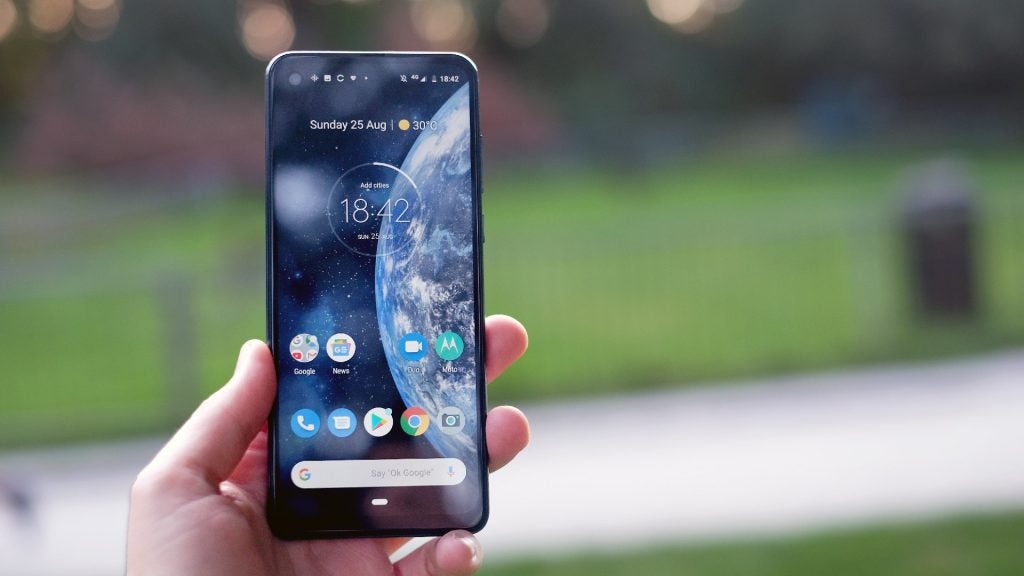
Motorola One Action Design – A very tall phone
There are three important Motorola One Action design choices to note. First, this phone has a 21:9 aspect screen. Its shape is very long, and not at all wide for an affordable mobile with a 6.3-inch screen.
Such a tall screen may seem bizarre if your current mobile has a 16:9 screen, as seen in virtually ever phone until a couple of years ago. However, a day or two in the shape seems almost normal. We humans are an adaptable bunch.
The construction type is the Motorola One Action’s second notable aspect. This phone has a plastic back, not the glass seen in the G7 and G7 Plus. It’s mildly disappointing, and you can tell from the reflections that the plastic bends inward to the fingerprint scanner on the back. Glass is very hard. This plastic is not.
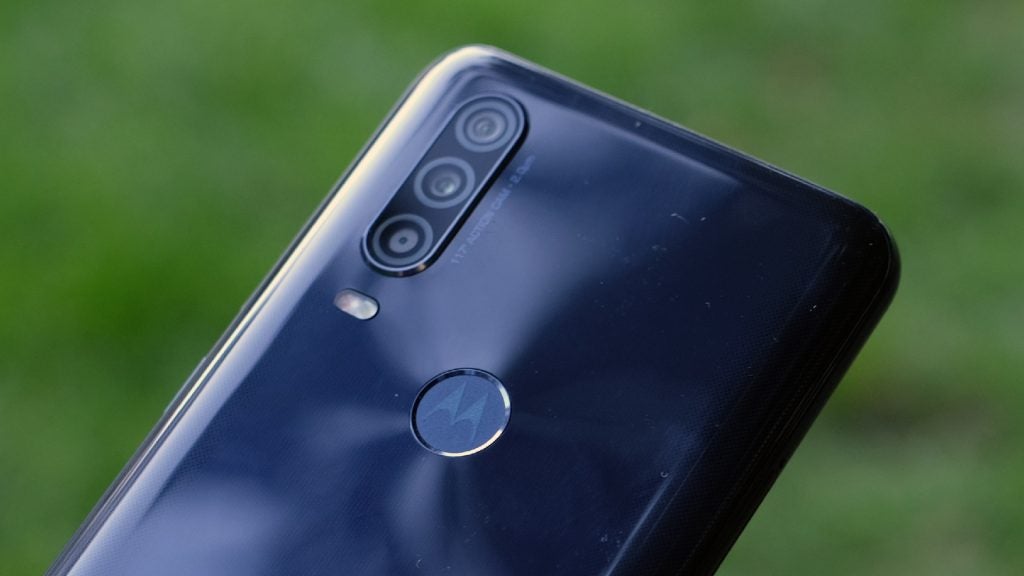
Some Motorola, Huawei and Honor budget phones have “devolved” in this sense over the last couple of years. More use plastic rather than glass, and it’s one reason to choose a Moto G7 instead. That big difference melts away almost completely as soon as you use the bundled case, though. Glass or plastic, your fingers only feel the silicone of the case.
The headphone jack is the Motorola One Action’s third important element. I have used a successions of high-end phones over the last few months, and returning to one with a 3.5mm jack is a refreshing change. You can charge the phone while using headphones, and you won’t have to use an adapter if you own a nice wired set.
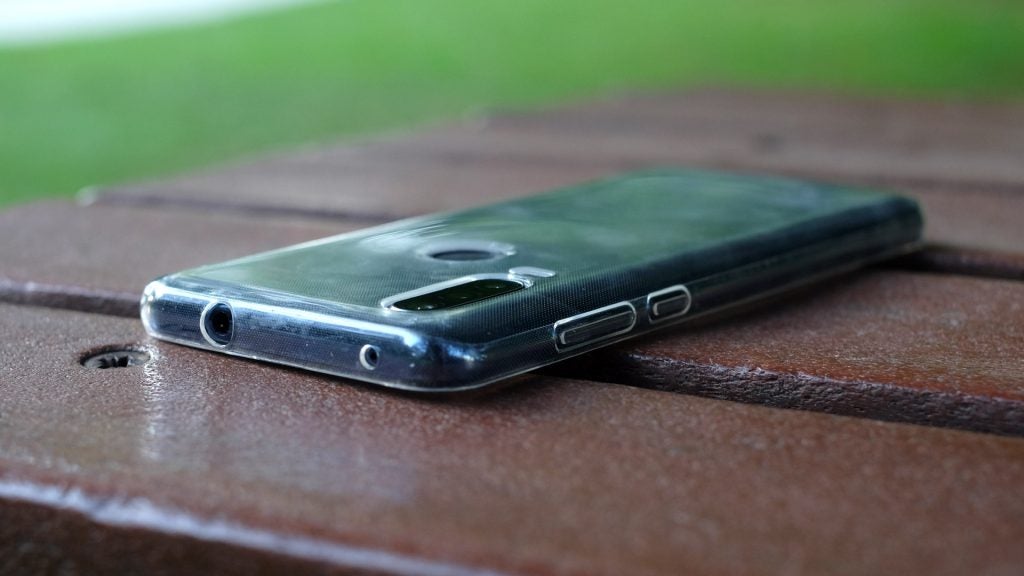
A plastic back and headphone jack are two giveaways the Motorola One Action is an affordable phone. The borders are too. This phone has an all-screen front with a punch hole, but the screen borders and the blank black area around the little punch hole cut-out are larger than those of a £500-plus phone. This is no big sin. A punch hole is distracting no matter how small the border is. And at £219, I’m more than happy to live with the compromise.
The Motorola One Action’s rear fingerprint scanner is slightly slower than the best too, including some Huawei/Honor phones at the price. But we’re talking about a fraction of a second, not the kind of delay that should put you off the phone.
You get a lot of storage too – 128GB is enough to house a huge collection of cached Spotify tracks, lots of games and years’ worth of photos.
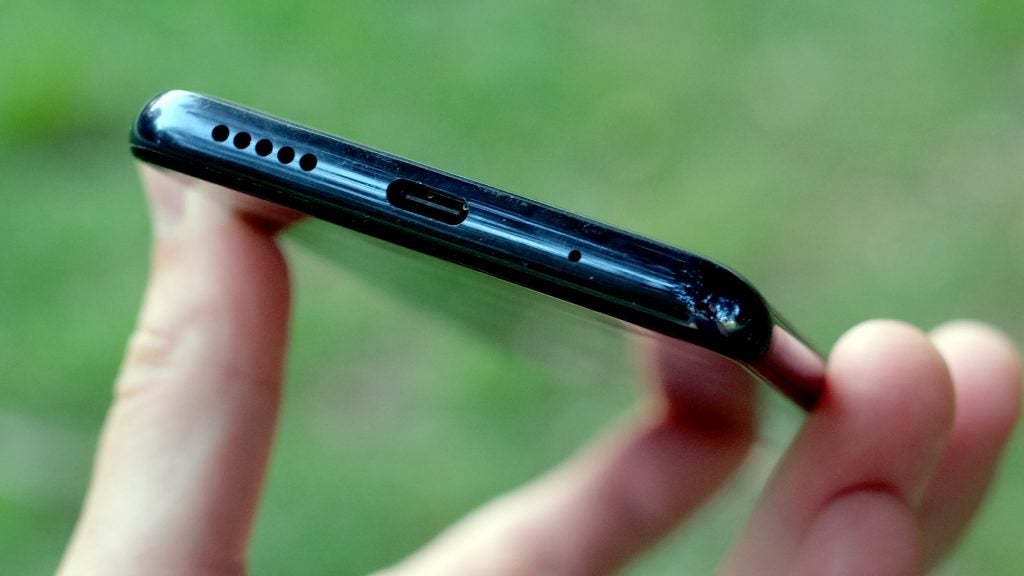
Motorola One Action Display – Mostly excellent
The Motorola One Action’s 21:9 screen measures 6.3 inches across and has a resolution of 2520 x 1080 pixels. It’s a super-elongated version of “Full HD”.
This screen doesn’t seem quite as big in person as that screen inch count may suggest, because the sheer height accounts for a chunky portion of it.
Revised your expectations? The Motorola One Action’s screen is mostly excellent, with just a couple of irritations.
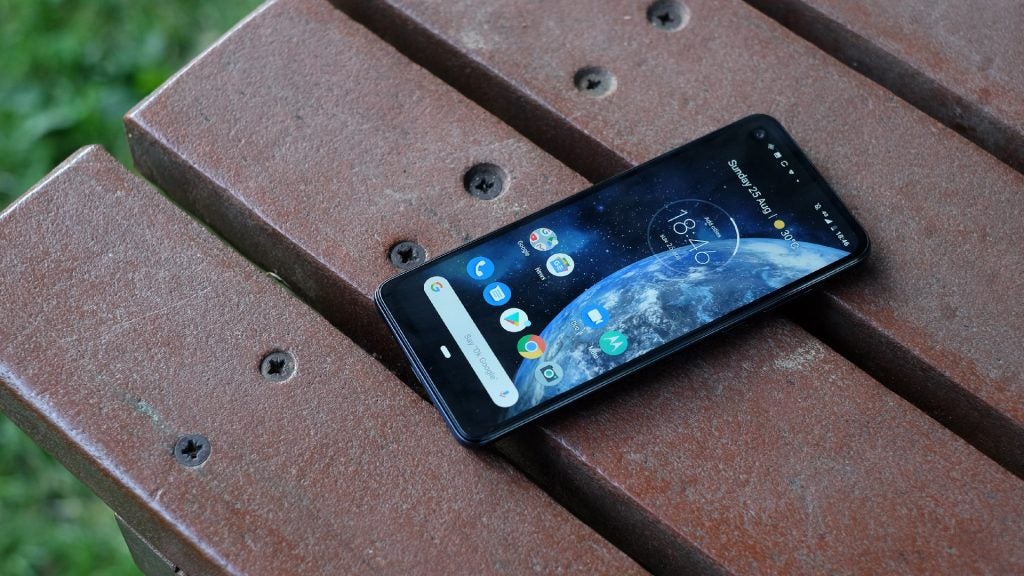
Its colour is great. There are three saturation levels you can choose between in the settings. It starts with “Vivid”, which looks punchy and tasteful, lacking the polarising hyper-saturated look an OLED phone might have. This screen uses an LCD panel.
Outdoors visibility is unusually good, as the Motorola One Action has very good maximum brightness for an affordable phone. There’s also minimal loss of brightness at an angle, which is again proof of the quality of the screen hardware used.
Want the bad bits? At present the Motorola One Action is not certified to play Netflix at HD resolutions. You’ll see standard definition only at present, although this still looks pretty good on a phone screen.
Related: Best cheap phones

The big punch hole also limits how much of the display can be used for video. Double tap to crop/zoom and it only extends to the punch hole border, so there are still noticeable black bars when watching cinematic aspect movies. This is app-specific, though. YouTube lets you fill the entire screen, usually lopping off the odd head or two in the process.
The Motorola One Action’s auto brightness mode is the other quibble. While maximum brightness is good, the phone tends to aggressively lower display brightness too quickly at times, requiring you to bring up the notification bar controls to change it back.
Motorola One Action Software – Android at its best
The Motorola One Action runs Android P and is an Android One phone. This means it has a version of the system similar to that seen in Pixel phones. Manufacturer tweaks are minimised, and the top layer of the interface has a completely vanilla look.
This means the Motorola One Action likely has a much more gesture-led approach than your current phone. You flick up the screen once to get to the multi-tasking display, and again to get to the app drawer. Or a bigger single swipe sends you direct to the drawer.
So far, so Google Pixel 3.
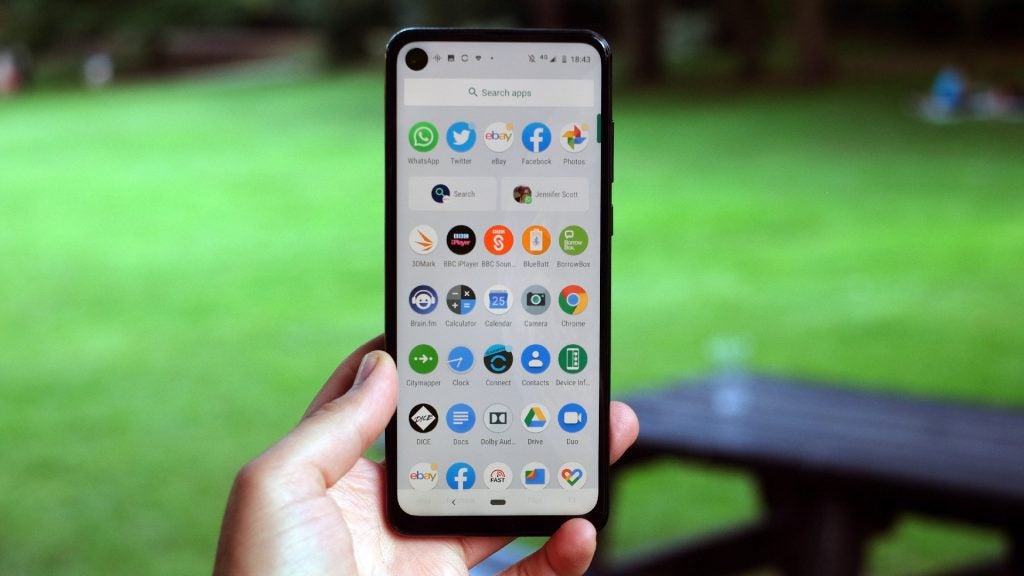
Moto Display is the most important Motorola addition. This is a standby screen view. When a notification comes in, or you pick up the Motorola One Action, you’ll see the time and icons below representing any outstanding notifications
This is as important a part of Motorola phones’ personality as any case design elements. And unlike some manufacturer additions, this one comes without a downside.
The Motorola One Action also has a bunch of gestures, called Actions. Accidentally turning the torch on (with a double “karate chop”) a bunch of times while running has been my sole interaction with them this time around. But you can also open up the camera with a double twist, or take a screenshot with a three-finger touchscreen press. You can turn these Action gestures on and off independently. Keep the ones you like, ditch the ones you don’t.
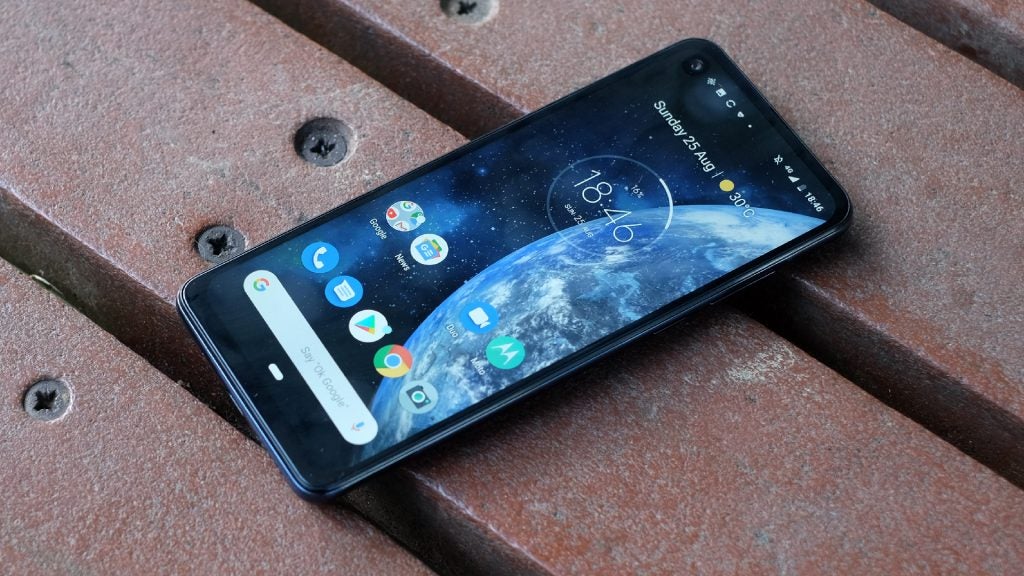
Motorola One Action Performance – Powered by Samsung
You might expect the Motorola One Action to run perfectly given it has stripped-back software. It’s not quite perfect at launch, though. I’ve noticed a few little glitches and moments of misbehaviour in the camera app.
However, these all seem minor issues that will soon be ironed out with a software update or two.
The phone’s core processor is a little unusual too. It’s the Samsung Exynos 9610, as seen in the more expensive Samsung Galaxy A50.
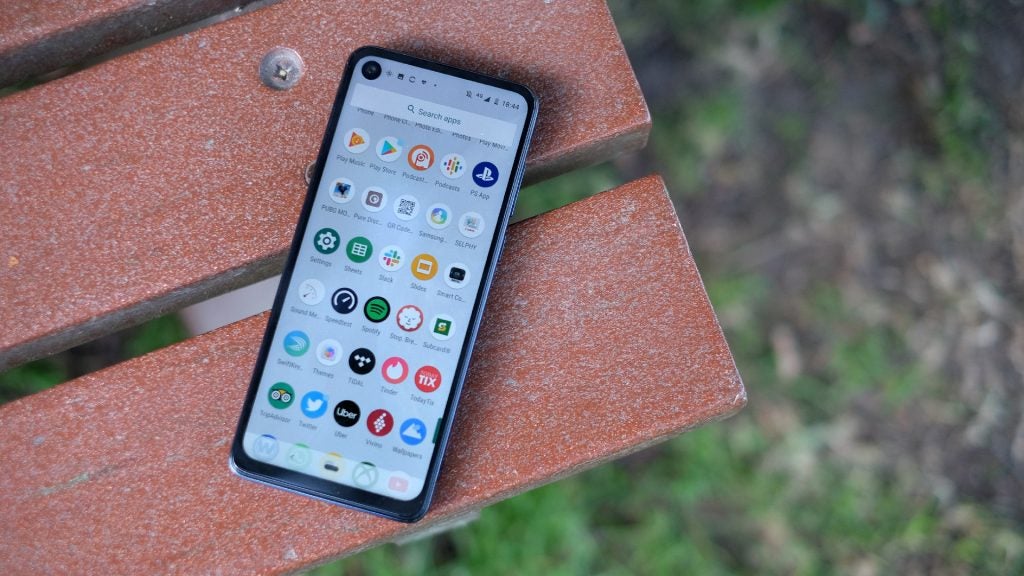
This is an 8-core processor with four Cortex-A73 performance cores and four Cortex-A53 efficiency cores. Phone makers often use MediaTek and Samsung processors, rather than the more popular Qualcomm Snapdragon kind, when every penny matters – and that means we see a lot of the lowest-end chipsets.
The Exynos 9610 is not one of these, though, and is perfectly respectable. It just about matches the Motorola G7 Plus for CPU power, scoring 5123 points in Geekbench 4.
GPU power is just slightly worse. The Exynos 9610 has a triple-core Mali-G72 graphics chipset. Like other phones at the price, you can play high-end games like PUBG and Ark: Survival Evolved perfectly well, but in a few the graphics settings need to be cut down a little for smooth results.
Motorola One Action Camera – A true GoPro rival?
The Motorola One Action has a triple rear camera array, but this does not really feel like one in use. You have no choice over the field of view when taking photos. It’s the normal 28mm-ish view or nothing.
This is because one of the additional cameras, a 5-megapixel sensor, is only there for depth sensing. And the other, a 16-megapixel camera, can only be used for video. My best guess here is Motorola barred it from taking photos because the results in testing were not very impressive.
That said, Motorola has made the cunning move of rotating the wide camera sensor by 90 degrees so you capture landscape video when holding the Motorola One Action upright. Switching between it and the main camera for photos would feel clunky.
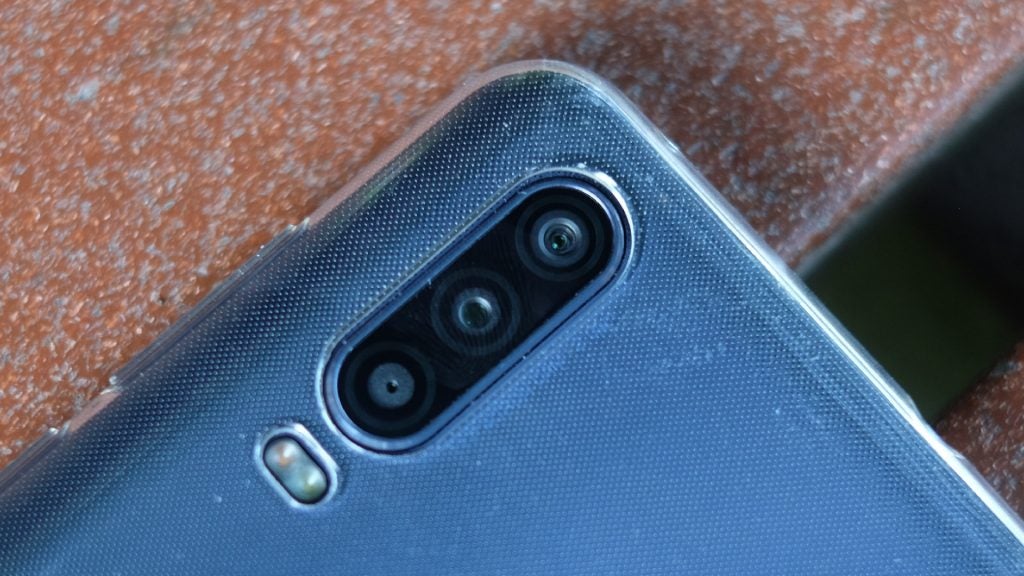
Its actual job is to capture ultra-stabilised wide angle “action cam” style video. I took Motorola One Action out for a run in the local park to see how it fares compared to the standard camera, which already has pretty solid software stabilisation.
The improvement is real. This action camera feature removes most of the up-down swaying you get when shooting video when running, or even walking. The effect is similar to what you might get with a low-end gimbal, which actively controls the position of the camera, counteracting any minor movements you make while still letting you pan around.
It’s not quite as smooth, of course, but there’s less judder than with the normal camera. And while the video is a little soft, it’s perfectly usable.
The other “extra” camera is less useful. It lets you take images with a blurry background using the Portrait mode.
This is a bit buggy at the Motorola One Action’s launch. The phone has a habit of reporting the camera as blocked when it is not. It then refuses to engage the blur. When it does work the effect can look a little crude and unconvincing, making a worse job of cutting out the subject than Huawei rivals. Stick to actual portraits of people and you will be able to capture some good-looking results, though.
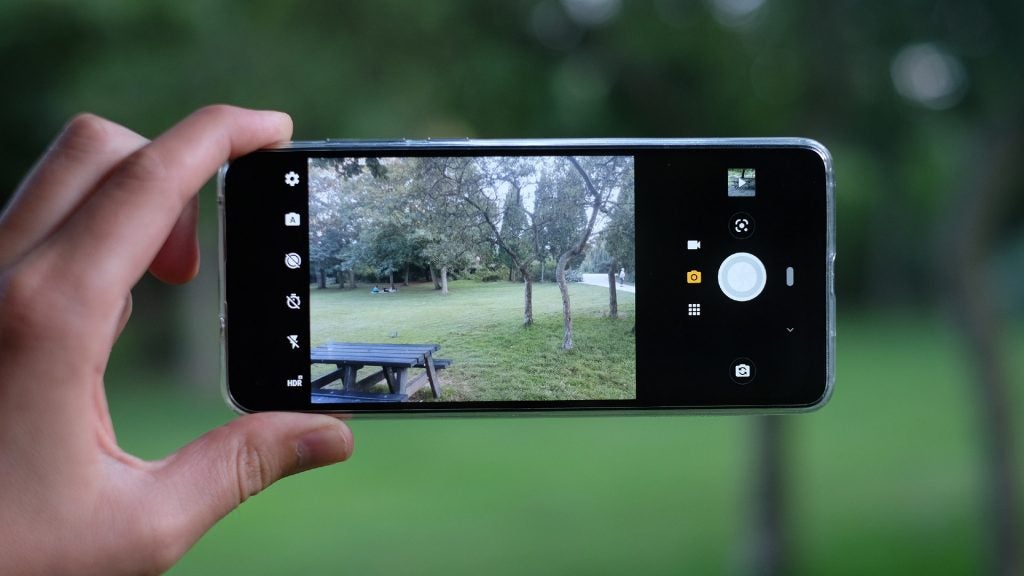
My initial reaction to the Motorola One Action was disappointment, but mostly because I came in fresh, without too much prior research. When you get hold of a triple rear camera phone, there’s an expectation you’ll be able to take photos from multiple fields of view. But you can’t here.
Get over that initial hump and you’ll realise the Motorola One Action is a pleasant budget camera phone. Colour is punchy, day-lit images look vital and contrasty. They are also pretty sharp down to the pixel level. Zoomed in you can see the effect of the image processing, with a character similar to some Samsung phones. There’s none of the vague, dithered look seen in some affordable phones.
HDR processing is very good too. Images with a very high level of light contrast across the frame tend to look significantly better than they do in the on-screen preview.


There are a few minor bad parts to consider, and they are similar to those of other affordable Motorolas.
Shooting doesn’t quite feel instantaneous, with a little under a half-second of shutter lag. The Motorola One Action has a habit of overexposing some scenes where there’s no obvious reference point, such as the sky. Sometimes you need to manually alter the exposure to get the shot you want.

Auto exposure has messed up this shot completely

Go manual and you can get much closer to what you are after
Close-up focusing is hit and miss too, pushing you towards the manual mode, which lets you set the focus.
Night images could be better, too. The Motorola One Action handles dingy rooms pretty well. An interior shot of a room lit only by a small off-frame lamp didn’t even compare too badly to the Galaxy Note 10+. But there’s no major enhancement of the light level for street scenes at night, even if you try to increase the exposure manually.

Detail in the brighter areas is good, but there’s very little lifting of the darker parts
Like several previous higher-end budget phones, the Motorola One Action seems to have good hardware, but it doesn’t quite have the software to squeeze out its full potential. There’s no dedicated Night mode, for example. You can shoot 4K video using the main camera, though.
The Motorola One Action shoots 30fps Full HD as standard, and you lose the stabilisation option in the 4K mode. Here are some more sample images I took with the Action:

The background blurring still isn’t great





And the selfie camera? It has a 12-megapixel sensor and can use the screen as a flash of sorts in low light. The results are good for an affordable phone, but there’s the usual degradation of detail you’d expect from a cheaper phone in dim rooms.
Motorola One Action Battery Life – Fair rather than great
The Motorola One Action has a 3500mAh battery. Like most affordable Motorola phone bar the G7 Power, its lasting power is fair rather than great.
I can end up with 20% charge by bed time. But on a few taxing days I have had to plug the phone in to make sure it goes the distance. If ultra-long battery life is a top concern, consider the Moto G7 Power instead. It has a mammoth 5000mAh battery and is significantly cheaper. The screen isn’t as sharp, the processor isn’t as powerful. but it’s a great budget all-rounder.
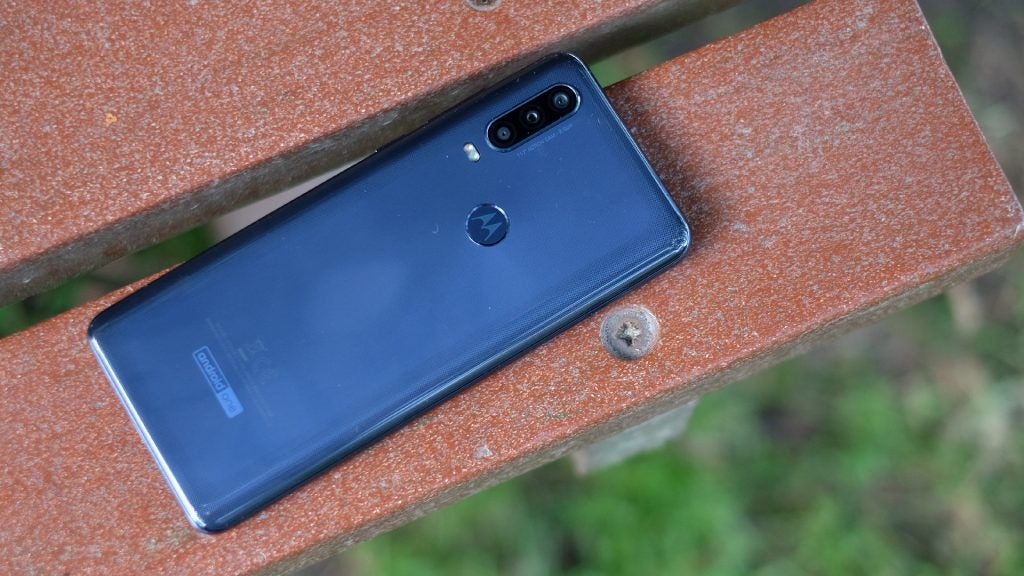
Should I buy the Motorola One Action?
Some of the Motorola One Action’s supposed advancements are slightly thin. This is not a huge step forward from the G7 Plus, but does seem a more well-rounded phone than the spec-hungry One Vision.
The “action camera” won’t actually be useful for everyone, but it’s unusual and lets you take very stable-looking widescreen videos without holding your phone on its side.
CPU power is good for the money, and so is screen quality. You can’t go far wrong here, but even Motorola’s own phones offer compelling alternatives if great battery life or a high-end feel are top priorities.
Verdict
A solid affordable Android with an interesting, if not essential, GoPro-like action camera feature.
How we test phones
We test every mobile phone we review thoroughly. We use industry standard tests to compare features properly and we use the phone as our main device over the review period. We’ll always tell you what we find and we never, ever, accept money to review a product.


